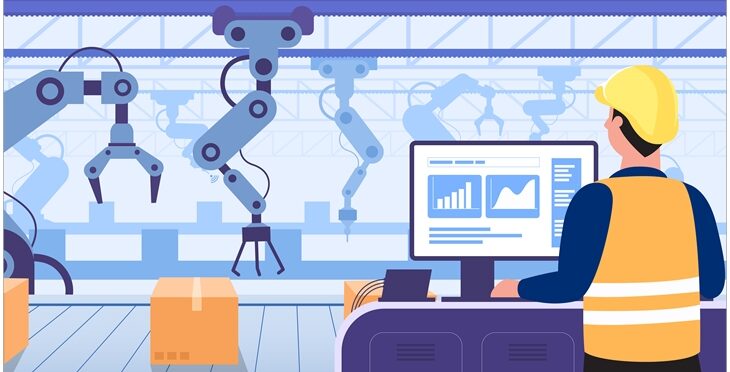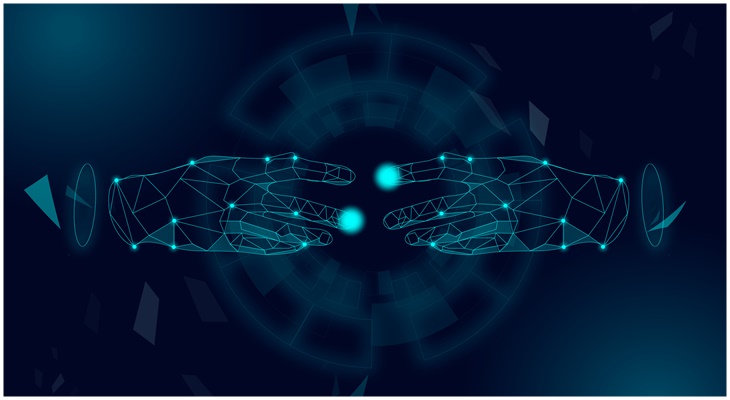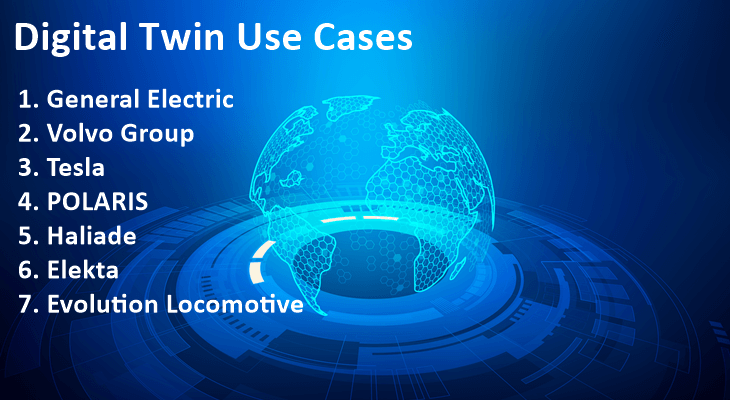Introduction to Human-Machine Collaboration
Human-machine collaboration is a model in which humans collaborate with artificial intelligence. Collaboration takes place with machines instead of treating them as tools. Each contributes qualities to the table that the other lacks. Also, machine-human collaboration fills in the gaps in each other's intelligence & physical capabilities.
Many people believe we are entering the third age of computing. This involves machine-human collaboration. Futurists believe that soon humans would regard AI systems as partners with unique skill sets. Moreover, others worry that depending on AI may result in a labor shortage for humans. It might also make people lazy and foolish.
Human and machine collaboration is usually synchronized to ensure efficient interaction. The human, the machine, or both can control the synchronization. An automated system, such as a robot, is referred to as a machine. The common goal is usually a complex task. A human and an automated system complete a task in a series of subtasks.
Human subtasks are those in which complex sensory-motor control abilities are required. Also, it is a must to have a high level of adaptation to changing conditions. The machine's subtasks are very repetitive. They involve little complexity in the handling of workpieces. Also, there is a combination of a human's adaptability and a machine's speed and accuracy.
Advantages of Human-Machine Collaboration
- Humans and machines will collaborate to improve their operating capabilities. It would also increase their strengths and compensate for each other's flaws.
- Collaboration would lessen human error while also providing help to employees.
- Humans would be able to undertake jobs that they would be unable to do on their own with the help of machines.
Examples of Current Human-Machine Collaboration
• A computer game, Foldit, uses machine-human collaboration to fold synthetic proteins. It also attempts to comprehend the real-world creation of proteins that cause human diseases. It manipulates a protein structure using manual and AI-driven procedures in the game.
• Two amateur chess players defeated a field of supercomputers and grandmasters. They did it with the help of an AI system running on three PCs. In the process, the human-AI team also established a new chess class dubbed centaur chess.
• Knowledge Ventures, a Japanese venture capital firm, elected an AI system to its board of directors. This brings machine-human collaboration to the top of the corporate ladder.
• UAV drones are collaborative in the military. This means that a machine takes the front lines with virtual human assistance.
• The Talos suit, which is under development by the US military, adds a powered exoskeleton to a human. It has an integrated heating, cooling, vital monitoring, and heads-up display. This makes the exoskeleton experience resemble that of the Ironman movies.
Challenges to Human-Machine Collaboration
Machines are more powerful than people. Thus proximity to human partners is important. Also, putting 'fragile' humans near these powerful machines could be dangerous.
These risks are now mitigated by prohibiting humans from working near active robots. Isolating machines and humans in completely separate working areas. Separating humans with shields and quad rails adds security. These separations are not always possible in a collaborative environment. Thus humans must work with active robots, also known as collaborative robots.
Data Overload
Machine learning and data analytics work with both filtered and uncensored data. There is a need for deep examination of recent market trends, customer behavior and patterns, and their needs. Data analytics extracts insights from this data to assist organizations in making decisions. Massive volumes of data could overburden computing systems, causing delays in accurate decision-making.
Cost
AI assists businesses in ensuring cost-effectiveness and efficiency in their operations. But, these tools and software may be beyond reach for some businesses. Thus limiting their ability to expand and adapt.
Redesigning Roles for Humans and Machines
Cooperation should be created with and around humans. This must take account of the broader socio-technological context. We should not focus on the human as a part of the problem or as a partial solution. Contemporary robots have limited sensing, manipulation, and communication capabilities on the machine side.
Machines will play a larger part as machine capabilities advance. This could lead to new responsibilities for machines in human-machine collaboration. Also, it would cause a shift in the dynamics of human-machine teams.
How to train people to work alongside machine partners is a big question. In conclusion, deeper knowledge of what makes a human a good member/leader will aid in answering these concerns.
Communication of Humans and Machines
Effective communication is a significant hurdle to progress in human-machine collaboration. Robots must be able to better explain to humans what they can and cannot do, as well as what they actually do. The inability to explain this makes it difficult for human-machine collaboration. Nonverbal behavior is another issue, such as how a robot might take notice of what a person notices.
Humans will better understand a device's intent with improved machine observability and apparency. Humans might not need to track what the robot is doing if the robot seeks help when needed. Communicating purpose between people and robots is difficult. For example, if a software agent guesses a human's intent, it may automate a process resulting in harmful effects.
The creation of a single, simple language that can be used by any system might be the simplest solution. Feedback mechanisms and physical interactions between humans and agents are also required.
But, removing human speech would make the obstacles of effective robot-to-robot communication easier.
Flexibility and Resilience
Improved human-machine collaboration would need greater flexibility and resilience. Humans can adapt and apply their abilities to new situations. But, robots cannot achieve the same level of flexibility without extensive programming.
Human adaptability, teach us something. Such as the adaptation of human language to broad acceptance of text messaging. We cannot wait for human and robot natural language to converge. An in-depth investigation into scenarios in which humans but not robots can adapt needs to take place.
Breakthroughs in context-driven adaptive autonomy are necessary to achieve resilience. Also, such high degrees of sophisticated autonomy would need considerable improvements. Such as in commonsense knowledge and practical manipulation tasks.
Conclusion
Artificial intelligence is at a crossroads in its evolution. Early adopters are investing in autonomous sensing systems. These systems can communicate, interpret, and learn on their own. Businesses are focusing their efforts on developing optimized business strategies.
These are based on alternative human-machine collaboration systems. It will improve human capabilities and also open up new business opportunities.
Companies need to continue to invest in human and artificial intelligence collaboration. This would be a crucial strategy to increase their revenues. According to experts, revenues will increase by approximately 38 percent.
Whether humans can handle machine intelligence is currently unknown. Also, what is certain is that the future will bring unimaginable opportunities for business leaders. It will transform the very basics of our working environment.
You may like to read:
Artificial Intelligence Applications In The Food Industry
Effect of Artificial Intelligence Automation on the Economy
What Is A Deep Learning Framework: Top 10 Frameworks
Agentic AI: The New Trend Shaping Autonomous Decision-Making in the Tech World





